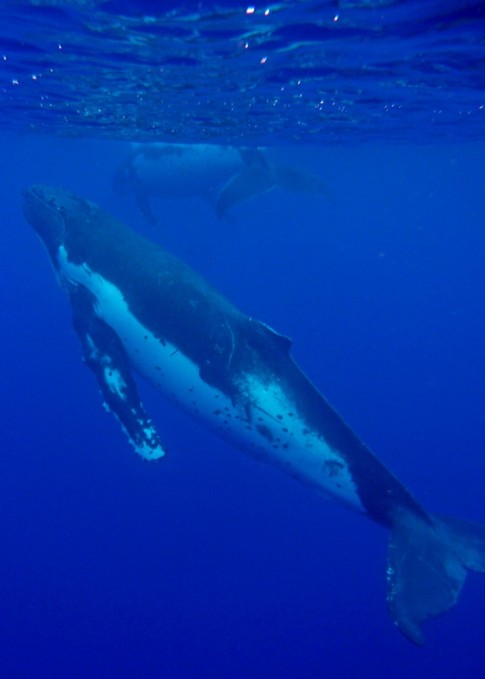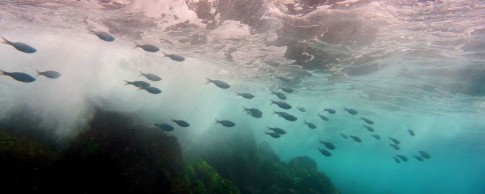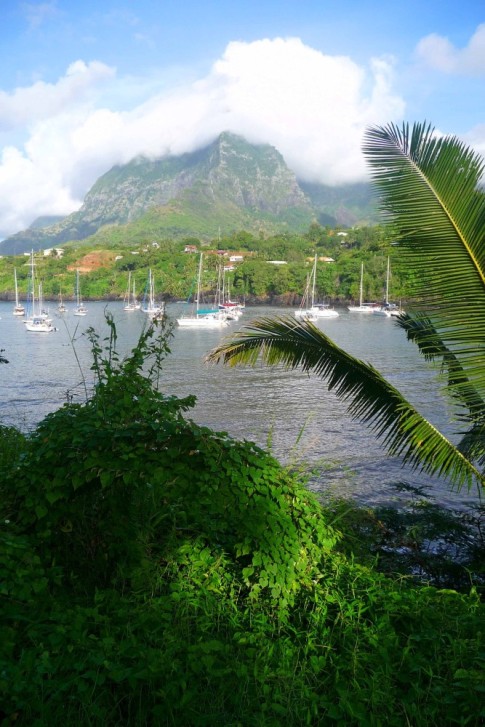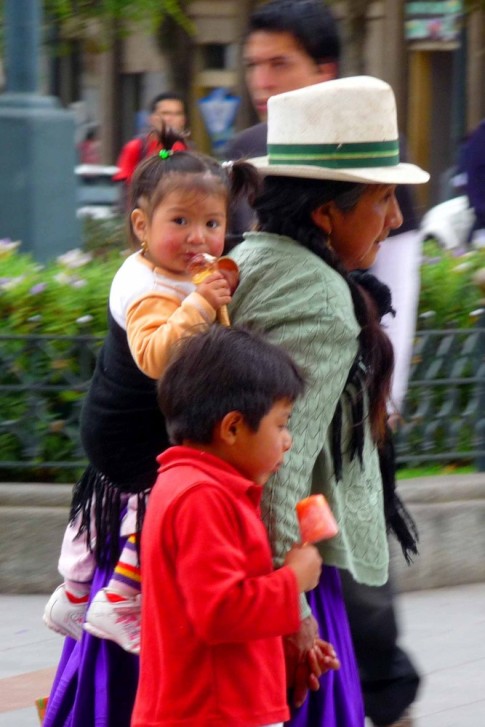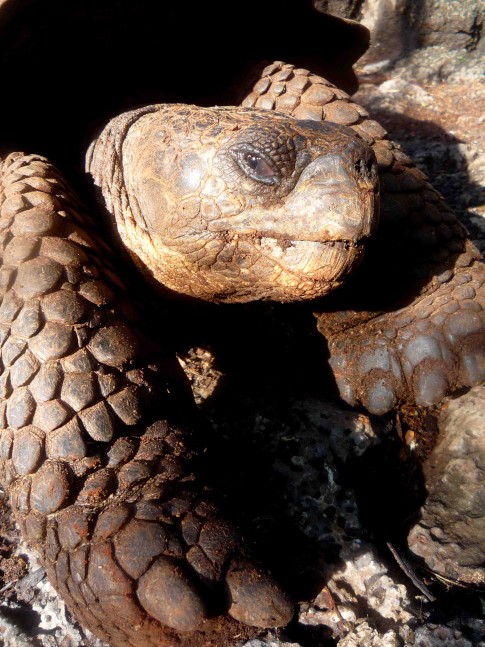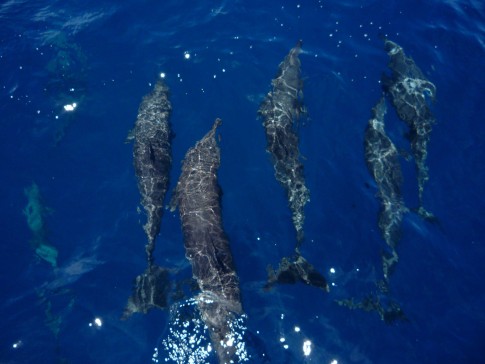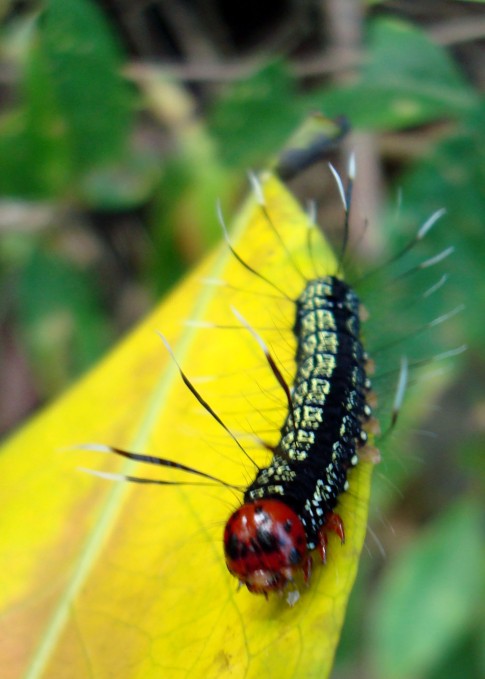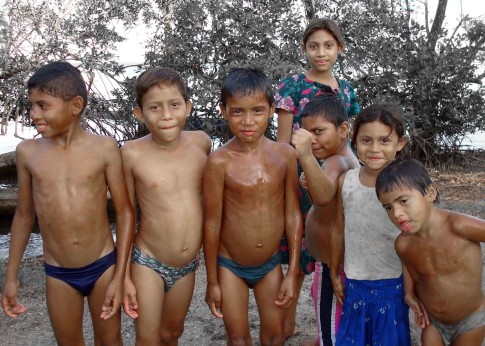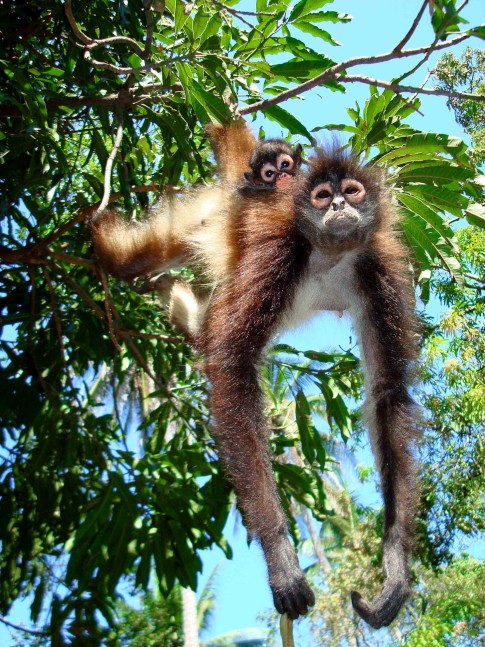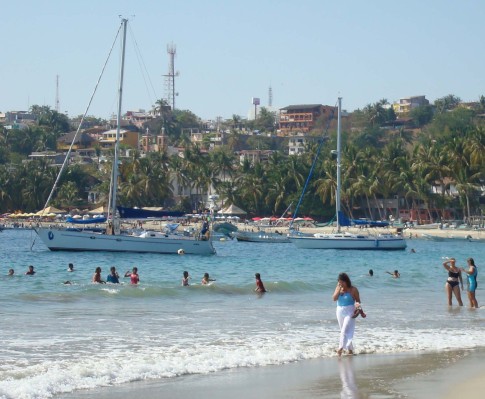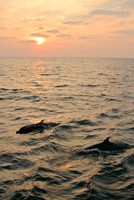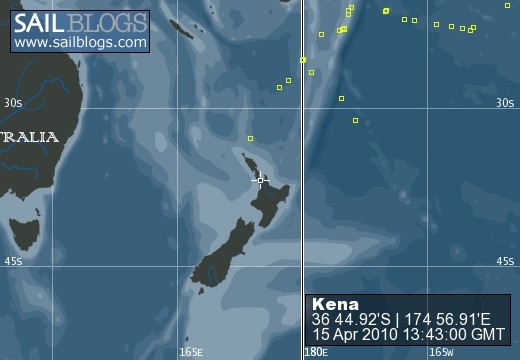
Kena
22 November 2009 | Tutukaka
11 November 2009
10 November 2009
09 November 2009
07 November 2009
07 November 2009
04 November 2009
03 November 2009
01 October 2009
29 September 2009
05 September 2009 | Nuku'alofa
27 August 2009
27 August 2009
23 August 2009
16 August 2009
14 August 2009
12 August 2009
09 August 2009
08 August 2009
08 August 2009
Cuenca
26 March 2009
Roger
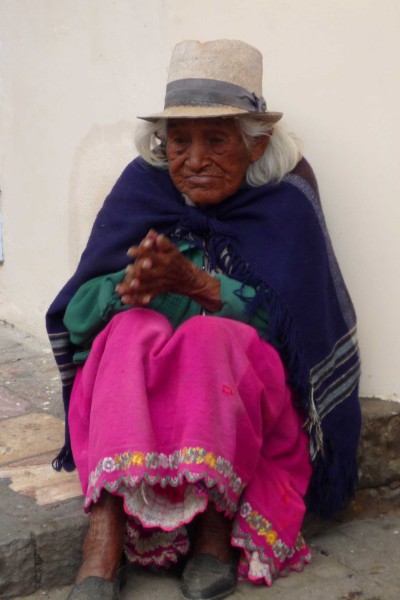
March 6th to March 10th
Cuenca is an old colonial town in the southern highlands of Ecuador. It's a world heritage site, and as it is considerably closer to Guayaquil than Quito and by many accounts more interesting than Quito, we decided to head there for our inland trip. Local advice held that we needed to get on one of the earliest buses to Guayquil in order to catch the bus for Cuenca, so it was another extremely early start. The "directo" (non-stop) buses are quite comfortable and the trip to Guayquil from La Libertad was uneventful. The bus station in Guayaquil is a huge "Terminal Terrestre" with at least three stories, shops, food courts, and rows and rows of bus company counters. We had been told to buy tickets for Cuenca first, and then get something to eat. However, we ended up purchasing tickets for a bus that was leaving in just a few minutes, so it was a bum's rush to get on the bus and so only a few meager snacks and some water were grabbed just before we got on and set off.
At first, the land was flat and wet --- water everywhere. The main crops seem to be bananas (Ecuador is claimed to be the world's largest exporter of bananas), rice, and something that looks somewhat like sugarcane but bushier. After sixty miles of this, jungle covered hills rose abruptly and steeply from the plains. Tane observed that the whole feel was much like Asia. Suddenly we were climbing and within 30 minutes we were in fog. The slope of the hills was extreme, with evidence of huge land and rock slides everywhere. At times, we picked our way through narrow, wet, gravel diversions built through massive slide areas. Everywhere, looking over the down side revealed nothing but gray mist with the first few yards of a vertical wall disappearing into the murk. From time to time, the road was one way only, as crews worked to rebuild parts that had slipped away. After nearly three hours of steady climbing, the clouds thinned and we reached the summit in the middle of Cajas national park. Now we saw glimpses of the Andes peaks, lakes, and treeless mountainsides as we wound down through countless hairpin bends. Around 2pm, the bus arrived at the main Cuenca bus terminal and we got off to a much cooler day than we had started with. In Guayaquil and Puerto Lucia, my glasses tend to fog up whenever I walk outside from an air conditioned room. In Cuenca, at about 9,000 feet, there is no such problem. The mornings and evenings are cool and require a jacket. Being on the equator, the climate changes relatively little throughout the year.
Our hostal of choice was the Posada del Angel, run by an Argentinean couple. It is in a beautifully restored old building, where they've made the central courtyard into an atrium. We decided to wander the streets to get a feel for the downtown area. The streets are very clean, and there seemed to be relatively few tourists about. As we passed by a storefront that seemed to be have a combination of art and clothing, Tane noticed an interesting jacket. It turned out the young owners of the store were also the designers of the clothing on display. We stayed, a jacket was bought, and we met Bernado and Christian, the two owners and a little later, their father, Gustav. Gustav has a tiny art gallery a few doors down the street. We were invited there for coffee, then out to dinner with Gustav, his wife, and some expatriates. One of the expatriates, Mark, had been in Cuenca for 9 months. He was offering a free web site service for hotels, a sideline to his seeing eye dog training business. Tane was invited back the next day for some guitar playing, and he also organized to go to a party that night with Bernado and Christian. They really light up the steeples of their many churches at night, so that walking home is a great experience. The hostal keeps its doors locked most of the time, and guests are not provided with an outside door key. This means that if you arrive in the early hours of the morning, you have to bang away until the staff member on duty wakes up (of course, they're not supposed to be sleeping!). At about 4am, Sal and I were awakened by loud banging on the outside doors (which were directly below our room), so we had to get up and rouse the staff member of open the door for Tane. It turned out he couldn't get into the party, so he ended up spending the time with some local professionals he met at a microbrewery, then moving to a few different bars. Needless to say, things were a little sluggish the next day.
Cuenca is where the so-called Panama hats originated, and are still made. In fact, there is nothing at all Panamanian about Panama hats! A fascinating feature of Cuenca is that there are many people (mostly Canaris) wearing traditional dress, and in particular, traditional hats. It is the women, in particular, who wear the hats. It's quite startling at first to see the Indian women in hats our culture normally associates with men.
Cuenca has around 400,000 inhabitants and a reasonable amount of traffic. Pedestrians do not seem to exist in the minds of the drivers, and the stripes painted across the roads that we normally associate with pedestrian crossings just seem to be target zones for drivers. Absolutely no consideration is given to pedestrians, and since in some places the streets are so narrow that there is very little or no sidewalk, getting around on foot can be quite challenging at times. Horns don't ever seem to be used in anger, but they are used at all times to say "I'm here, I'm coming, watch out!"
On Saturday morning, while Tane slept, Sal and I walked about, visiting cathedrals, squares, and the local food market. It's indoors, and is the cleanest food market we've seen anywhere. There are three floors, with a different set of products on each floor. The top floor has a complete circuit of what can best be called "pig ladies". They each have at least one whole roast pig, with the head prominently displayed. As you walk by, you are offered samples. In the afternoon, we visited one of the leading panama hat stores --- the "showroom" is quite small, with hats hanging in long columns from every part of the ceiling. The hats are made from a special grass or reed that grows in the area. They range in price from a few dollars to thousands for a top class superfine. That evening, we all went to the Eucalyptus Café, one of the most interesting restaurants in town. We were treated to a salsa dancing lesson, great tapas, music, and an interesting social scene. The ground floor with the bar was fairly normal. However, the entire top floor had been reserved for a large group of local well-to-do folks all dressed up to the nines. The bathroom was upstairs, so when we went, we got to see them close up. All of the women were sitting together, as were all of the men --- just like a typical Australian party!
On Sunday, we took a tour out of town to the traditional home of the Canaris. Our tour guide, Alfonso, the local leader and organizer of the tour business, took us to his home first, then on a hike to the top of a hill that is the center of their spiritual life. On the way up, we paused at a large set of cages full guinea pigs - cuy. They are a local delicacy, and this was the "farm". Roast cuy on a spit is a common restaurant offering in the area. After walking along the Inca trail for a while (it passes right through the area), his wife and daughter appeared with lunch. A long white cloth was laid out on the ground, and the food from several containers distributed along it. The foods included hominy (called mote, large white corn kernels), rice, chicken, beans, and a spinach-like leaf vegetable. We all sat on the ground alongside the strip of cloth and ate using hand-carved wooden spoons. After a short nap, we participated in a ceremony with incense. There was a German couple with us, so one person from each of the four countries represented was used for each compass point. The ceremony was conducted largely in the Kichwa language which is common to almost all of the original mountain peoples of Ecuador. This is somewhat different from Quechua, which is the language of the Incas (I haven't checked this --- I believe this is what Alfonso said). The Germans, who are Lutherans, asked Alfonso about religion and the Spanish. It appears that the pre-Spanish religion is alive and well, in spite of many attempts at suppression. Alfonso implied that the Kichwa speaking peoples have considerable resentment of the imposition of Spanish culture. After the ceremony, we went back down the hill to the communal meeting hall. There, our guide and his grandchildren sang and danced for us, supplied us with a potent hot alcohol drink, and had us participate in the grinding of roast corn with a stone mate. The ground corn was mixed with water as a thick drink. This is apparently what the children eat at the school.
On Monday, we walked to the museum of modern art, which had some great pieces, then took a taxi to the University to see the orcheadario, famous for its large collection of native and imported orchids. Check out the photo of the monkey face orchid --- it really does look like the face of a monkey.
We left for Guayaquil at 6am on Tuesday in a minibus. This time, we got to see the Andes in all their glory --- massive peaks and huge valleys. We were back in Puerto Lucia by 2pm.
Cuenca is an old colonial town in the southern highlands of Ecuador. It's a world heritage site, and as it is considerably closer to Guayaquil than Quito and by many accounts more interesting than Quito, we decided to head there for our inland trip. Local advice held that we needed to get on one of the earliest buses to Guayquil in order to catch the bus for Cuenca, so it was another extremely early start. The "directo" (non-stop) buses are quite comfortable and the trip to Guayquil from La Libertad was uneventful. The bus station in Guayaquil is a huge "Terminal Terrestre" with at least three stories, shops, food courts, and rows and rows of bus company counters. We had been told to buy tickets for Cuenca first, and then get something to eat. However, we ended up purchasing tickets for a bus that was leaving in just a few minutes, so it was a bum's rush to get on the bus and so only a few meager snacks and some water were grabbed just before we got on and set off.
At first, the land was flat and wet --- water everywhere. The main crops seem to be bananas (Ecuador is claimed to be the world's largest exporter of bananas), rice, and something that looks somewhat like sugarcane but bushier. After sixty miles of this, jungle covered hills rose abruptly and steeply from the plains. Tane observed that the whole feel was much like Asia. Suddenly we were climbing and within 30 minutes we were in fog. The slope of the hills was extreme, with evidence of huge land and rock slides everywhere. At times, we picked our way through narrow, wet, gravel diversions built through massive slide areas. Everywhere, looking over the down side revealed nothing but gray mist with the first few yards of a vertical wall disappearing into the murk. From time to time, the road was one way only, as crews worked to rebuild parts that had slipped away. After nearly three hours of steady climbing, the clouds thinned and we reached the summit in the middle of Cajas national park. Now we saw glimpses of the Andes peaks, lakes, and treeless mountainsides as we wound down through countless hairpin bends. Around 2pm, the bus arrived at the main Cuenca bus terminal and we got off to a much cooler day than we had started with. In Guayaquil and Puerto Lucia, my glasses tend to fog up whenever I walk outside from an air conditioned room. In Cuenca, at about 9,000 feet, there is no such problem. The mornings and evenings are cool and require a jacket. Being on the equator, the climate changes relatively little throughout the year.
Our hostal of choice was the Posada del Angel, run by an Argentinean couple. It is in a beautifully restored old building, where they've made the central courtyard into an atrium. We decided to wander the streets to get a feel for the downtown area. The streets are very clean, and there seemed to be relatively few tourists about. As we passed by a storefront that seemed to be have a combination of art and clothing, Tane noticed an interesting jacket. It turned out the young owners of the store were also the designers of the clothing on display. We stayed, a jacket was bought, and we met Bernado and Christian, the two owners and a little later, their father, Gustav. Gustav has a tiny art gallery a few doors down the street. We were invited there for coffee, then out to dinner with Gustav, his wife, and some expatriates. One of the expatriates, Mark, had been in Cuenca for 9 months. He was offering a free web site service for hotels, a sideline to his seeing eye dog training business. Tane was invited back the next day for some guitar playing, and he also organized to go to a party that night with Bernado and Christian. They really light up the steeples of their many churches at night, so that walking home is a great experience. The hostal keeps its doors locked most of the time, and guests are not provided with an outside door key. This means that if you arrive in the early hours of the morning, you have to bang away until the staff member on duty wakes up (of course, they're not supposed to be sleeping!). At about 4am, Sal and I were awakened by loud banging on the outside doors (which were directly below our room), so we had to get up and rouse the staff member of open the door for Tane. It turned out he couldn't get into the party, so he ended up spending the time with some local professionals he met at a microbrewery, then moving to a few different bars. Needless to say, things were a little sluggish the next day.
Cuenca is where the so-called Panama hats originated, and are still made. In fact, there is nothing at all Panamanian about Panama hats! A fascinating feature of Cuenca is that there are many people (mostly Canaris) wearing traditional dress, and in particular, traditional hats. It is the women, in particular, who wear the hats. It's quite startling at first to see the Indian women in hats our culture normally associates with men.
Cuenca has around 400,000 inhabitants and a reasonable amount of traffic. Pedestrians do not seem to exist in the minds of the drivers, and the stripes painted across the roads that we normally associate with pedestrian crossings just seem to be target zones for drivers. Absolutely no consideration is given to pedestrians, and since in some places the streets are so narrow that there is very little or no sidewalk, getting around on foot can be quite challenging at times. Horns don't ever seem to be used in anger, but they are used at all times to say "I'm here, I'm coming, watch out!"
On Saturday morning, while Tane slept, Sal and I walked about, visiting cathedrals, squares, and the local food market. It's indoors, and is the cleanest food market we've seen anywhere. There are three floors, with a different set of products on each floor. The top floor has a complete circuit of what can best be called "pig ladies". They each have at least one whole roast pig, with the head prominently displayed. As you walk by, you are offered samples. In the afternoon, we visited one of the leading panama hat stores --- the "showroom" is quite small, with hats hanging in long columns from every part of the ceiling. The hats are made from a special grass or reed that grows in the area. They range in price from a few dollars to thousands for a top class superfine. That evening, we all went to the Eucalyptus Café, one of the most interesting restaurants in town. We were treated to a salsa dancing lesson, great tapas, music, and an interesting social scene. The ground floor with the bar was fairly normal. However, the entire top floor had been reserved for a large group of local well-to-do folks all dressed up to the nines. The bathroom was upstairs, so when we went, we got to see them close up. All of the women were sitting together, as were all of the men --- just like a typical Australian party!
On Sunday, we took a tour out of town to the traditional home of the Canaris. Our tour guide, Alfonso, the local leader and organizer of the tour business, took us to his home first, then on a hike to the top of a hill that is the center of their spiritual life. On the way up, we paused at a large set of cages full guinea pigs - cuy. They are a local delicacy, and this was the "farm". Roast cuy on a spit is a common restaurant offering in the area. After walking along the Inca trail for a while (it passes right through the area), his wife and daughter appeared with lunch. A long white cloth was laid out on the ground, and the food from several containers distributed along it. The foods included hominy (called mote, large white corn kernels), rice, chicken, beans, and a spinach-like leaf vegetable. We all sat on the ground alongside the strip of cloth and ate using hand-carved wooden spoons. After a short nap, we participated in a ceremony with incense. There was a German couple with us, so one person from each of the four countries represented was used for each compass point. The ceremony was conducted largely in the Kichwa language which is common to almost all of the original mountain peoples of Ecuador. This is somewhat different from Quechua, which is the language of the Incas (I haven't checked this --- I believe this is what Alfonso said). The Germans, who are Lutherans, asked Alfonso about religion and the Spanish. It appears that the pre-Spanish religion is alive and well, in spite of many attempts at suppression. Alfonso implied that the Kichwa speaking peoples have considerable resentment of the imposition of Spanish culture. After the ceremony, we went back down the hill to the communal meeting hall. There, our guide and his grandchildren sang and danced for us, supplied us with a potent hot alcohol drink, and had us participate in the grinding of roast corn with a stone mate. The ground corn was mixed with water as a thick drink. This is apparently what the children eat at the school.
On Monday, we walked to the museum of modern art, which had some great pieces, then took a taxi to the University to see the orcheadario, famous for its large collection of native and imported orchids. Check out the photo of the monkey face orchid --- it really does look like the face of a monkey.
We left for Guayaquil at 6am on Tuesday in a minibus. This time, we got to see the Andes in all their glory --- massive peaks and huge valleys. We were back in Puerto Lucia by 2pm.
Comments
| Vessel Name: | Kena |
| Vessel Make/Model: | Ganley Pacemaker 40 |
| Hailing Port: | Tutukaka, New Zealand |
| Crew: | Roger, Sally, Tane, Hunters all |
| About: | The Hunter family: Roger, originally from Tutukaka, New Zealand Sally, from Tasmania, Australia and Tane is from New Mexico. |
| Extra: | This leg of the trip is from Puerto Lucia, Ecuador to New Zealand. |
Kena's Photos - Main
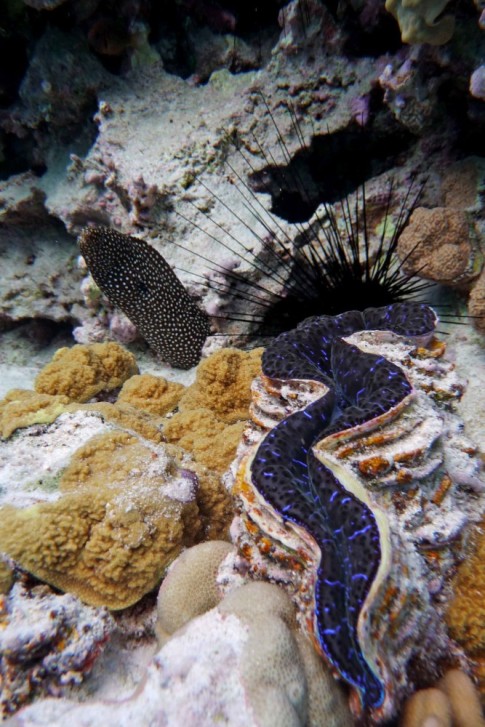 |
A few picks of Roratonga, where we picked up Tomas, and of the incredible Beveridge Reef
20 Photos
Created 1 September 2009
|
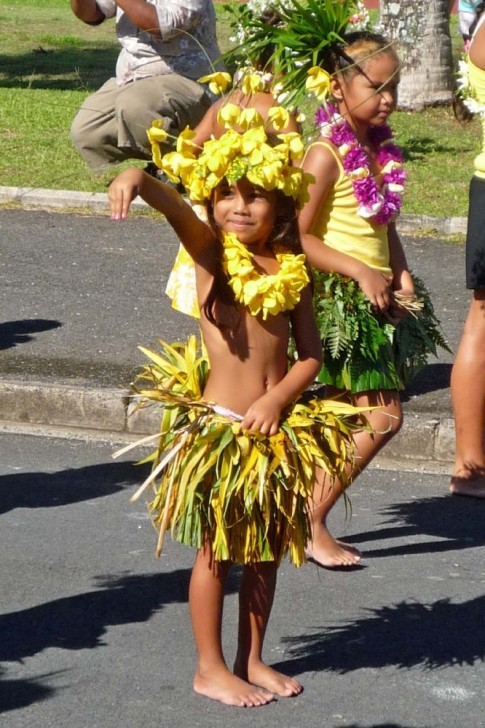 |
Our adventure in the islands of Tahaa and Raiatea in The Society Islands
18 Photos
Created 5 August 2009
|
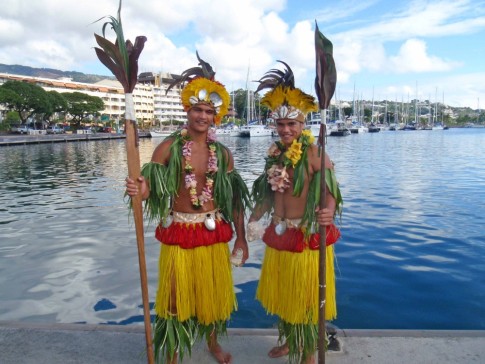 |
The Sailing Rendezvous in Tahiti and Moorea, plus a little of Huahine
35 Photos
Created 5 August 2009
|
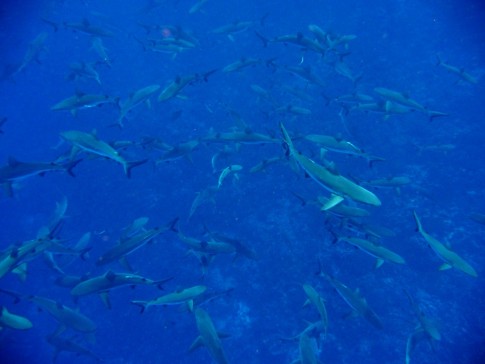 |
Our journey through the coral atolls of the Tuamotus in French Polynesia
65 Photos
Created 19 June 2009
|
S/V Kena
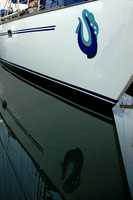
Who: Roger, Sally, Tane, Hunters all
Port: Tutukaka, New Zealand
